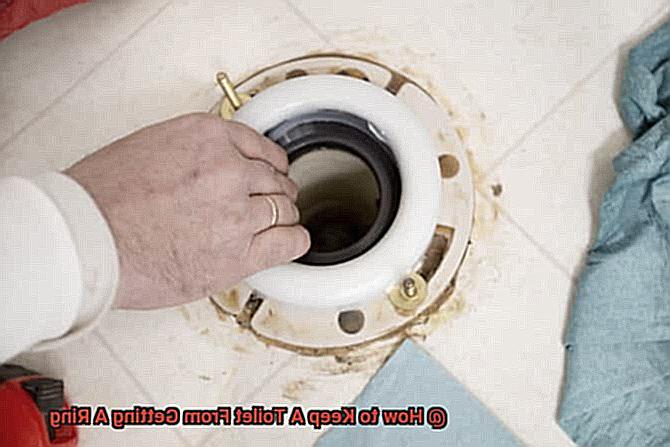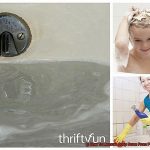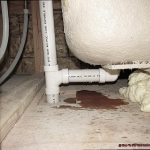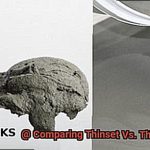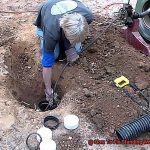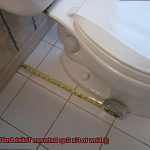Imagine walking into your bathroom, ready to clean the toilet, only to find that stubborn brown ring staring back at you.
No matter how hard you scrub, it just won’t budge. We’ve all been there – wondering how to prevent a toilet from getting a ring in the first place.
But it’s not just about appearances. The mineral deposits that cause those unsightly rings can also lead to clogs and slow draining pipes.
Not exactly something you want to deal with on top of a dirty toilet bowl. Luckily, there are simple steps you can take to keep your toilet looking and functioning its best.
One of the most common causes of toilet rings is hard water – water with high levels of minerals like calcium and magnesium. Installing a water softener can help reduce these minerals and prevent buildup in your toilet bowl.
Regular cleaning is also key in preventing toilet rings. Using a good quality toilet bowl cleaner and scrubbing the inside of the bowl with a brush on a regular basis can help keep mineral deposits from building up over time.
But we’re not done yet. In this blog post, we’ll share even more tips and tricks for keeping your toilet sparkling clean and free of those pesky rings.
Contents
- 1 What Causes Toilet Rings?
- 2 Cleaning the Toilet Bowl with Disinfectant
- 3 Using an Automatic Toilet Bowl Cleaner
- 4 Regularly Scrubbing with a Toilet Brush
- 5 Adjusting the Water Level in the Tank or Installing a Low-Flow Toilet
- 6 Maintaining Plumbing System to Prevent Rings from Forming
- 7 Conclusion
What Causes Toilet Rings?
Toilet rings can be a frustrating and embarrassing problem in any bathroom.
They can seem impossible to remove, but understanding what causes them is the first step towards preventing them. One of the most common culprits of toilet rings is hard water.
High levels of minerals like calcium and magnesium present in hard water leave behind mineral deposits that can slowly accumulate over time and form a ring around the bowl. It’s like leaving a glass of water on a windowsill and letting it evaporate, leaving behind mineral residue.
A similar process happens in your toilet bowl, leading to the formation of those unsightly rings. Another cause of toilet rings is bacteria growth.
Bacteria thrive in damp environments, and the moist atmosphere inside a toilet bowl provides an ideal breeding ground for them to grow. The bacteria can cause discoloration and staining, resulting in the formation of a ring around the bowl.
To combat bacterial growth, it’s essential to clean your toilet bowl regularly with a disinfectant cleaner. Using harsh cleaning products can also contribute to toilet rings.
Some cleaning products contain abrasive chemicals that can scratch the surface of the toilet bowl, making it more susceptible to stains and discoloration. Instead, opt for a mild cleaner that won’t damage your toilet bowl.
Flushing certain items down the toilet, such as feminine hygiene products or wipes, is another leading cause of toilet rings. These items don’t break down quickly and can get stuck in the pipes or bowl, leading to clogs and buildup.
Fortunately, there are several preventative steps you can take to keep your toilet free from rings. Using a disinfectant cleaner regularly and an automatic toilet bowl cleaner are both easy ways to keep your bowl clean and prevent mineral buildup.
Additionally, adjusting the water level in the tank or installing a low-flow toilet will help reduce the amount of water left in the bowl after each flush, which can prevent rings from forming.
Cleaning the Toilet Bowl with Disinfectant
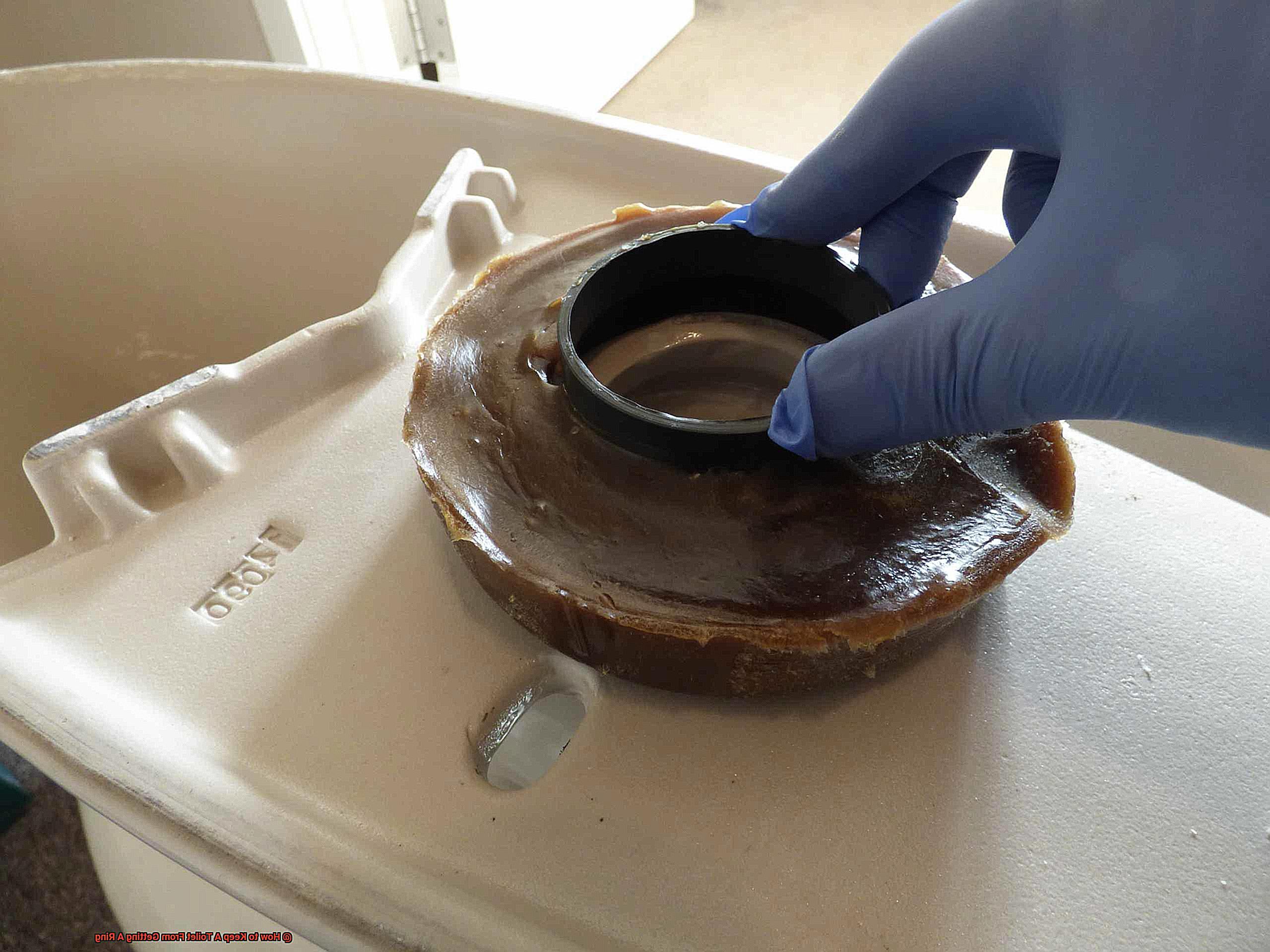
First off, let’s chat about why this is so important. Toilet rings are akin to those unwanted guests who just won’t leave – they’re caused by hard water mineral deposits, fungus growth, and flushing non-degradable items.
But fear not. You can keep those pesky visitors at bay by regularly cleaning with a mild disinfectant cleaner, using an automatic toilet bowl cleaner, adjusting water levels in the tank, or installing a low-flow toilet.
Now, let’s get down to business. Cleaning the toilet bowl with disinfectant is a crucial step in preventing stains and buildup of bacteria that can cause illness.
Start by flushing the toilet and pouring your chosen disinfectant into the bowl. It’s important to use a high-quality disinfectant that won’t damage the porcelain surface of your toilet bowl.
Next up, grab your trusty toilet brush and give the inside of the bowl a good scrubbing, paying extra attention to any stained or discolored areas. Don’t forget to clean under the rim of the bowl, where bacteria and mineral buildup can accumulate.
Here’s a pro tip: let the disinfectant sit in the bowl for a few minutes to allow it to work effectively. This will kill germs, bacteria, and viruses that can cause illness.
Afterward, simply flush the toilet again to rinse away any leftover disinfectant and debris that may have been loosened during cleaning. When working with disinfectants, always wear gloves and protective eyewear to keep yourself safe from any harmful chemicals.
And avoid using harsh chemicals or abrasive cleaners that can damage your toilet bowl’s surface or cause irritation to your skin or eyes. In conclusion, cleaning your toilet bowl with disinfectant is essential in keeping your bathroom clean and safe.
Using an Automatic Toilet Bowl Cleaner
These convenient cleaners come in various forms, from tablets to gels, and work by releasing cleaning agents into the water with each flush. But before you rush out to buy one, it’s important to consider the type of automatic cleaner that is suitable for your toilet.
Some cleaners contain bleach or other harsh chemicals that can damage certain types of toilets or plumbing systems. Always read the label and manufacturer’s instructions before using any cleaning product.
Once you’ve found the right cleaner, using it is a breeze. Simply drop the tablet or gel into the tank or clip it onto the rim of the toilet bowl.
The cleaner will slowly dissolve over time, releasing cleaning agents with each flush. Most automatic toilet bowl cleaners last for several weeks before needing to be replaced.
It’s important to note that while automatic toilet bowl cleaners are effective at preventing ring formation, they should not be considered a substitute for regular cleaning. It’s still essential to regularly clean your toilet bowl with a brush and cleaner to remove any stubborn stains or buildup.
To ensure that your toilet stays fresh and clean without any unwanted surprises, use a high-quality disinfectant cleaner that won’t damage your porcelain surfaces.
Regularly Scrubbing with a Toilet Brush
A toilet brush is designed to reach every nook and cranny of your toilet bowl, including the tricky spots under the rim and around the waterline.
These are the areas where bacteria and mineral buildup love to hang out, leading to stubborn rings that can make your toilet look less than pristine. But fear not, because regular scrubbing can nip this problem in the bud.
Here’s the lowdown: Start by pouring your favorite cleaner into the bowl and letting it sit for a few minutes to loosen any grime or dirt. Then, grab your trusty toilet brush and scrub away, paying special attention to those hard-to-reach areas.
Use firm pressure and a circular motion to ensure you’re getting rid of as much buildup as possible. Once you’ve given your toilet bowl a thorough scrubbing, flush away any remaining debris.
And here’s a pro tip: Always clean your toilet brush after each use to avoid spreading bacteria. Rinse it well under running water and let it air dry in a holder before storing it away.
But what if you want to take things up a notch? Consider using a toilet bowl cleaner that contains citric acid or hydrogen peroxide, which can help dissolve mineral deposits before they have a chance to form a ring.
This can reduce the frequency of scrubbing needed and keep your toilet looking fresh for longer periods of time.
Adjusting the Water Level in the Tank or Installing a Low-Flow Toilet
There are easy steps you can take to prevent these stains from forming. Firstly, adjusting the water level in your toilet tank can make a huge difference.
By lowering the water level just below the overflow tube in the center of the tank, you can minimize the amount of mineral buildup that occurs. It’s easy: turn off the water supply valve behind the toilet, flush out as much water as possible, and then use a flathead screwdriver or pliers to turn the water level adjustment knob counterclockwise.
If adjusting the water level doesn’t do the trick, consider installing a low-flow toilet. Not only do these toilets use less water per flush, but they also have smoother surfaces that are less prone to staining.
Look for models with a WaterSense label, which indicates they meet EPA standards for water efficiency and performance. But don’t forget about regular cleaning.
To prevent ring formation and remove any hard water minerals, use a non-abrasive cleaner and brush. Alternatively, try using a toilet bowl cleaner with hydrochloric acid to dissolve those pesky minerals.
Maintaining Plumbing System to Prevent Rings from Forming
It’s time to take charge and maintain your plumbing system to prevent them from forming.
Your plumbing system is the heart of your home, and just like any other vital organ, it needs proper care to function correctly. To start, regularly cleaning your pipes and drains is crucial in preventing blockages that lead to toilet rings.
Over time, debris can accumulate in your pipes, causing blockages and creating unsightly stains. By cleaning your pipes and drains regularly, you can avoid blockages and ensure your plumbing system runs smoothly.
Using septic-safe cleaners is also vital in maintaining your plumbing system. Harsh chemical cleaners can damage pipes and septic systems, leading to costly repairs.
Instead, opt for septic-safe cleaners that remove stains and disinfect without harming your plumbing system. Flushing non-degradable items down the toilet such as wipes, paper towels, and feminine hygiene products can clog your pipes and lead to blockages.
To prevent this, only flush toilet paper and waste down the toilet. Lastly, scheduling regular maintenance with a licensed plumber is highly recommended.
They can detect potential issues before they become significant problems and help you maintain your plumbing system for optimal performance. In conclusion, preserving your plumbing system is essential in preventing toilet rings from forming.
tdfK4n8SgwM” >
Conclusion
Dealing with a toilet ring can be a real headache, causing frustration and embarrassment.
Not only do they look unsightly, but they can also lead to clogs and slow draining pipes. Luckily, there are simple steps you can take to keep your toilet looking and working its best.
One of the most common causes of toilet rings is hard water, which contains high levels of minerals like calcium and magnesium. Installing a water softener is an effective way to reduce these minerals and prevent clogs from forming in your toilet bowl.
Additionally, regular cleaning is crucial in avoiding unsightly rings. Use a quality toilet bowl cleaner and scrub the bowl daily to prevent mineral deposits from building up over time.
Adjusting the water level in the tank or installing a low-flow toilet can also help minimize the amount of water left in the bowl after each flush, preventing rings from forming altogether. Another leading cause of toilet rings is flushing items such as feminine hygiene products or wipes down the toilet.
These items don’t break down easily and can get stuck in pipes or bowls, leading to clogs and buildup. To ensure that your toilet stays ring-free for good, it’s essential to schedule regular maintenance with a licensed plumber.

